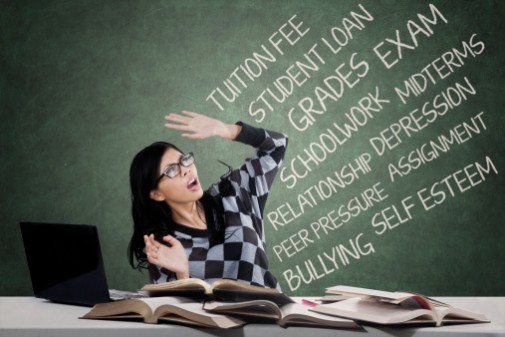Anxiety on the rise among college freshmen

College generally comes with more independence, challenging courses and new social opportunities, but for some, navigating this new environment can be difficult— especially for freshmen.
According to The American Freshman: National Norms Fall 2014 survey, 9.4 percent of respondents “felt depressed” during the past year, a significant rise over the 6.1 percent reported five years ago. Those who “felt overwhelmed” by school work and other commitments also rose to 34.6 percent from 27.1 percent.
“Some anxiety or sadness can be normal,” says Dr. Aaron Malina, neuropsychologist at Advocate Good Shepherd Hospital in Barrington, Ill. “This is the student’s first time away from home, and it can be an emotionally difficult time. Experiencing a little homesickness is expected, but students and parents should be on the lookout for more significant emotional disorders.”
Dr. Malina advises students who struggle with depression, nervousness, changes in sleep or appetite, or suicidal thoughts to seek help.
“Most colleges have student counseling or crisis centers, with the cost of services typically included in tuition and fees,” says Dr. Malina. “Students can benefit from these support services, allowing for a smoother adjustment and academic experience.”
In addition to the findings on anxiety and depression, researchers also found that:
- Partying is on the decline – Between 1987 and 2014, students who partied less than an hour a week increased from 24.3 percent in 1987 to 61.4 percent in 2014. During that same time, students who partied more than six hours or more per week declined from 34.5 percent to 8.6 percent.
- Social media use is increasing – The percentage of students spending six hours or more per week on social media increased from 18.9 percent to 27.2 percent from 2007 to 2014.
- Cigarette smoking is less common – Approximately 9.2 percent of students in 1981 reported frequent cigarette use compared to only 1.7 percent of students in 2014.
- Alcohol consumption in high school is not as popular – Consumption of wine or hard liquor during senior year of high school dropped from 67.8 percent in 1987 to 38.7 percent in 2014.
Related Posts
Comments
One Comment
About the Author
health enews staff is a group of experienced writers from our Advocate Health Care and Aurora Health Care sites, which also includes freelance or intern writers.


















Rachel,
You are not alone!!
See someone to talk. It will be a relief.
See you in several days!!!!
Love you,
mom